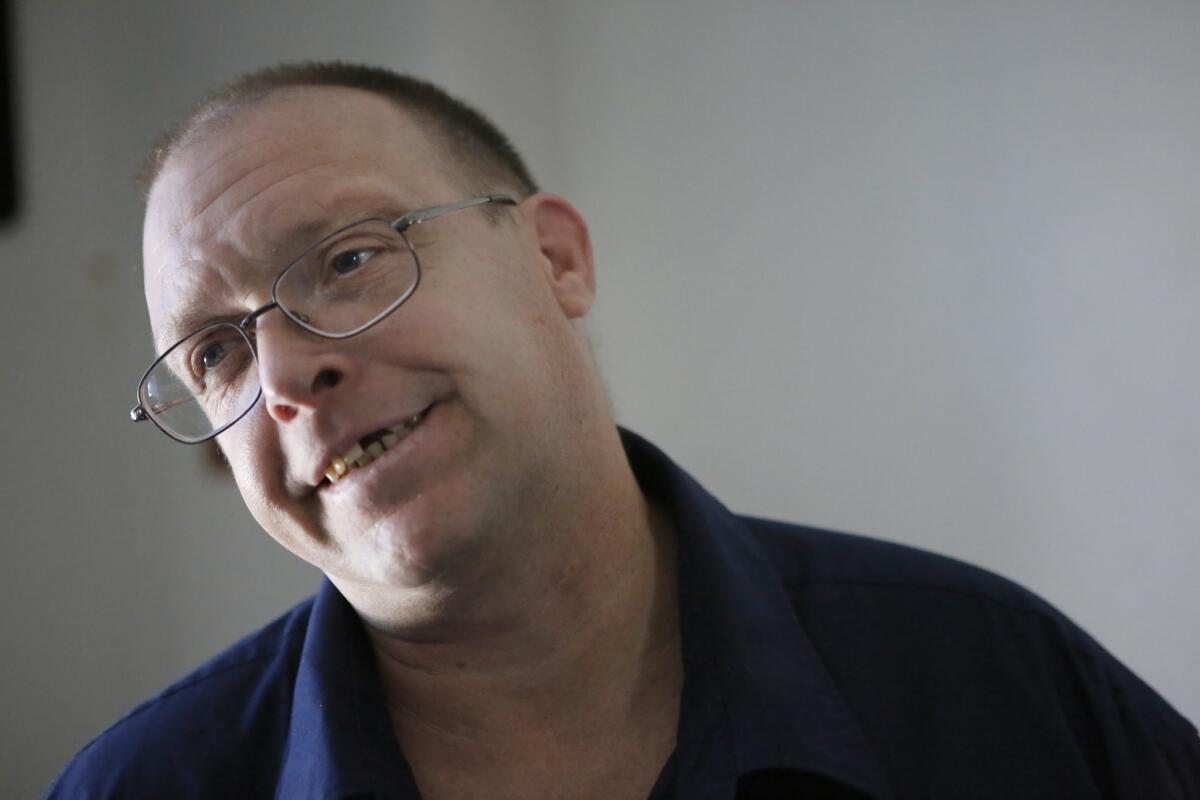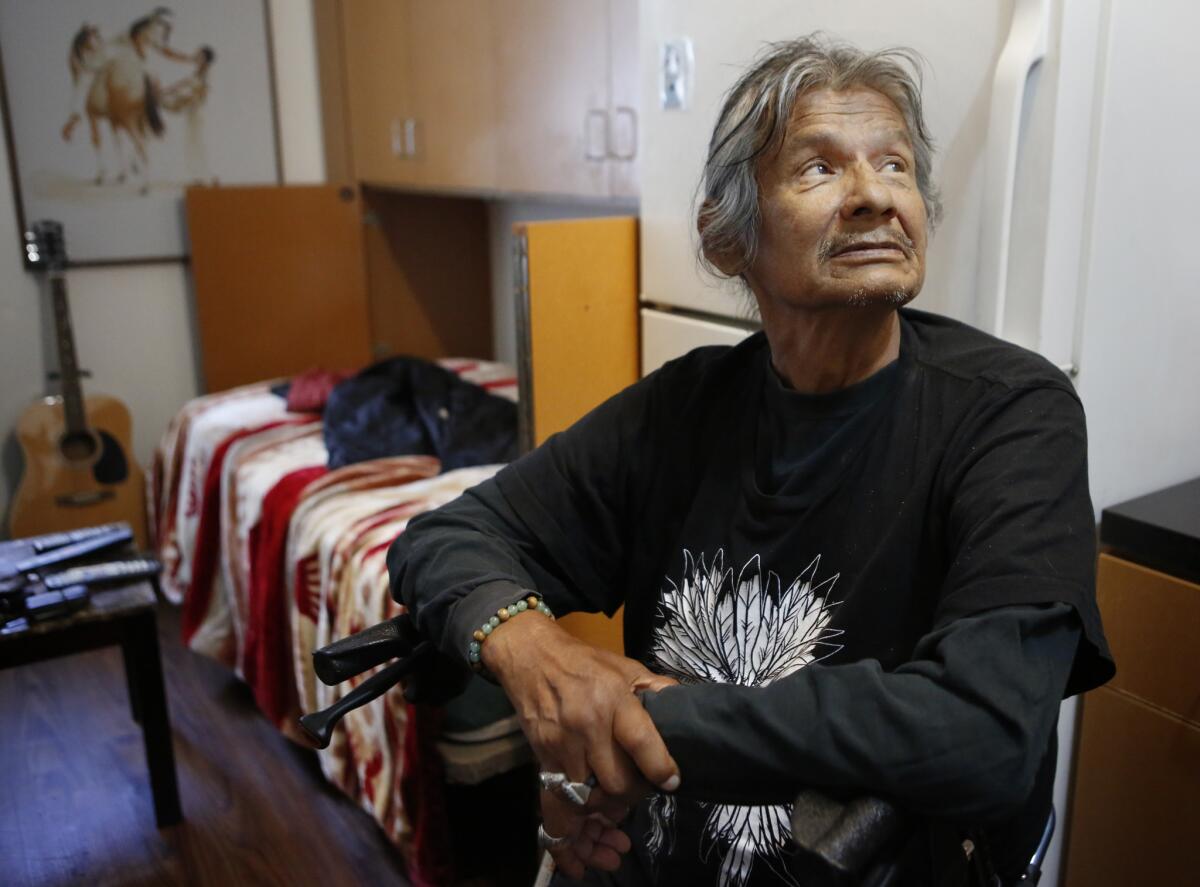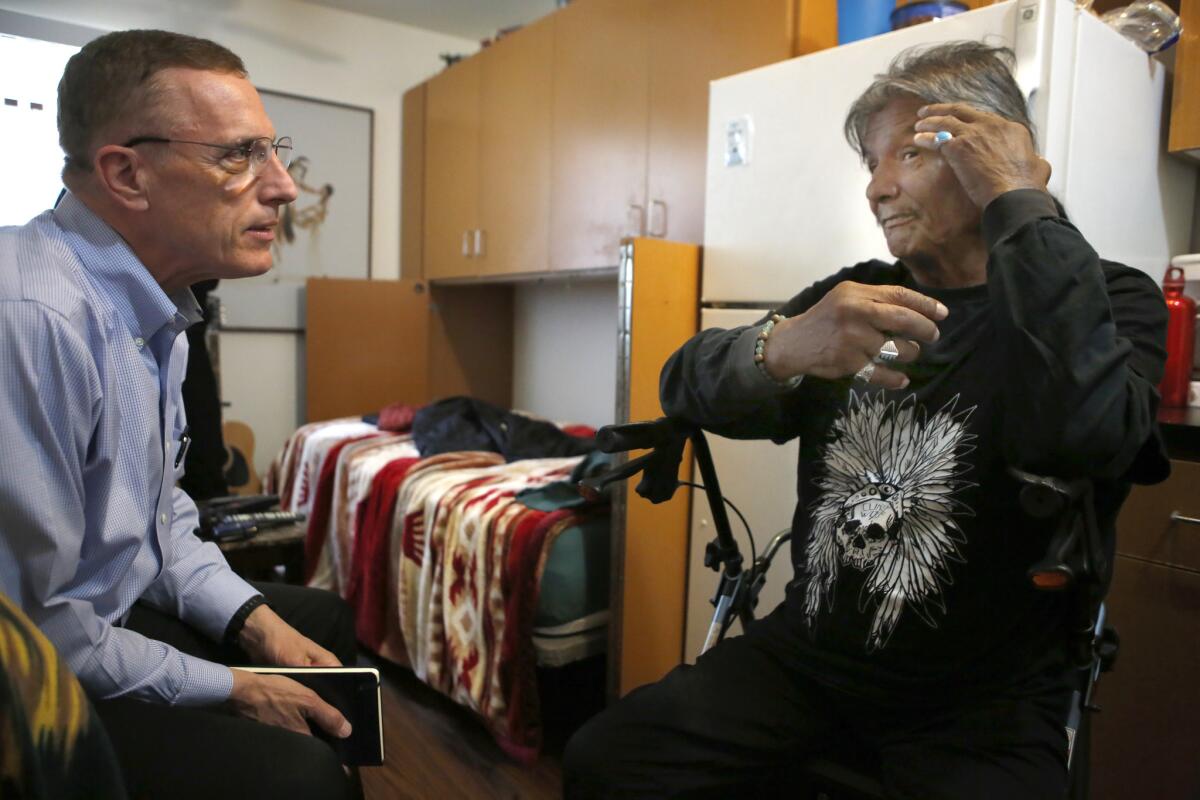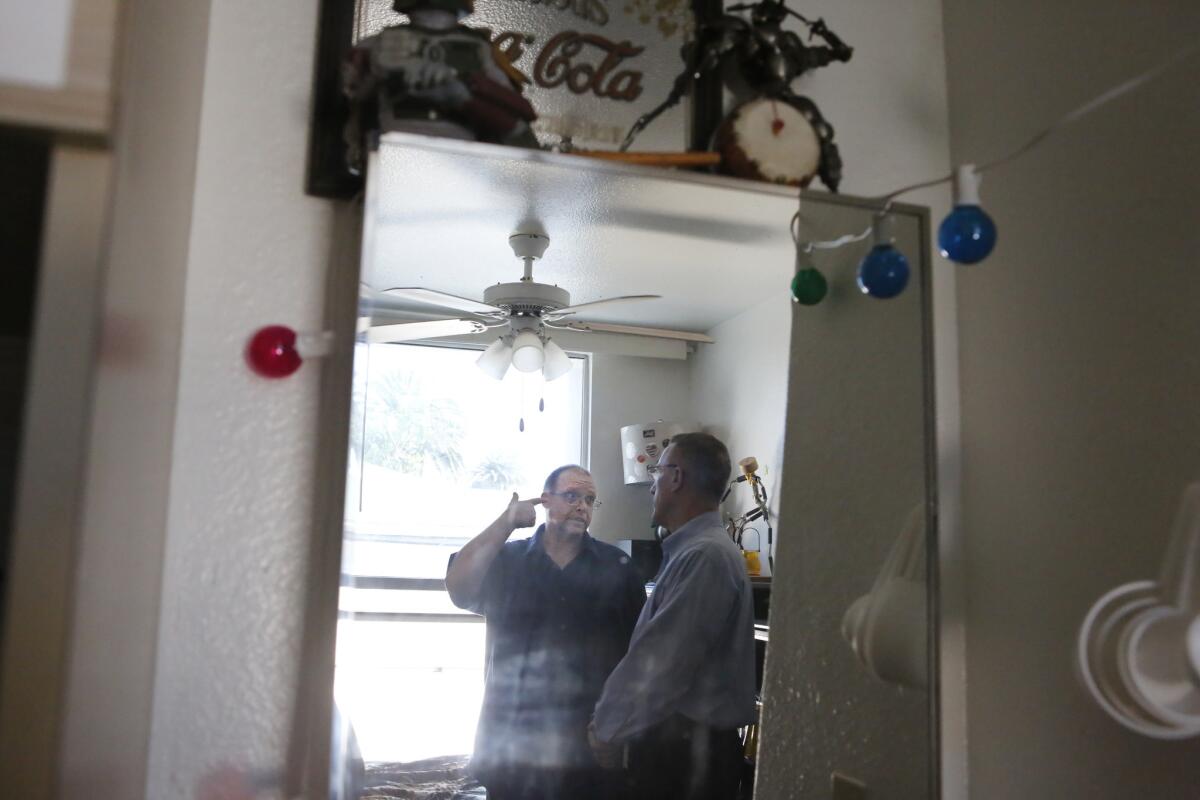Q&A: Mental illness and homelessness are connected. But not how you might think

According to Dennis Culhane, University of Pennsylvania professor and homelessness researcher, about half of homeless people with severe mental illness also have problems with alcohol or drugs. (August 7, 2017) (Sign up for our free video newsletter
Even as Los Angeles starts a $1.2-billion homeless housing construction program, residents from Temple City to Venice are fighting to keep homeless projects out of their neighborhoods.
But since 1995, chronically homeless mentally ill people — a widely shunned subgroup — have been living in Santa Monica’s Step Up on Second apartments, a block from the tourist-friendly Third Street Promenade and close enough to the beach to feel the salt air.
“Look around. It’s here,” Rep.
Murphy, author of a major 2016 mental health reform bill, was in Santa Monica to tour three of Step Up’s permanent supportive housing buildings, which offer apartments and counseling, case management and substance abuse treatment to 267 formerly homeless people with mental health issues.
During the visit, The Times interviewed Step Up Executive Director Tod Lipka, staff members and residents. Dennis Culhane, University of Pennsylvania professor and homelessness researcher, and Andrew Sperling, legislative advocacy director for the National Alliance on Mental Illness, were interviewed later.
Below are their edited responses to common questions about mental illness and homelessness:

Are most homeless people mentally ill?
A relatively small percentage of all homeless people nationwide — 13% to 15% — are mentally ill, but their symptoms — paranoia and delusions — draw attention and mislead others into thinking their numbers are greater, Culhane said.
However, Los Angeles’ homeless population skews heavily to single adults who have lived in the streets a year or longer — a subgroup with a high incidence of mental health issues. Local authorities estimate that 30% of the county’s homeless people have serious mental illness.
Does chronic homelessness cause mental illness, or is it the other way around?
Lipka said employees at his agency don’t see people developing serious mental illness by virtue of their homelessness. But “I do believe long-term isolation can lead to mental illness,” said Steve Elam, Step Up lead life skills coordinator.
Culhane said severely mentally ill people sometimes get treatment and aid that prevents them from becoming homeless.
How many homeless people are physically or mentally disabled?
Culhane said half the country’s homeless people have a physical or mental disability, or both. But they don’t necessarily qualify for federal disability payments, which in any case are too low — about $800 a month — to cover rent, utilities and other needs, even with food stamps tacked on, he added. Welfare reform in 1996 made it difficult for people whose impairment stems largely from substance abuse disorders to receive federal disability aid, Culhane said.
“Instead of looking at individuals and their biographies and conditions, the question is why is the disability system failing?” Culhane said.

Is mental illness the result of genetics and brain chemistry alone, or does trauma play a role?
“We’re still figuring that one out,” Sperling said. A strong case has been made for a genetic role in schizophrenia, but physiological and biological brain development, environmental stressors and childhood trauma are also thought to influence mental health.
“I grew up in Jordan Downs and Watts, I’ve seen a lot and I’ve been through two riots,” said Step Up resident Marvin Duckworth, 57. “My sense of hope and faith is not that strong.”
How many mentally ill homeless people have issues with alcohol and drug abuse, and does drug addiction cause mental illness?
About half of the homeless people with severe mental illness also have problems with alcohol or drugs, Culhane said. Lipka put the percentage of his agency’s clients even higher — 60% to 70% — but he and the other experts said drug use does not cause severe mental illness. Rather, homeless people with untreated mental illness self-medicate to relieve symptoms, Lipka said.
I grew up in Jordan Downs and Watts, I’ve seen a lot and I’ve been through two riots. My sense of hope and faith is not that strong.
— Marvin Duckworth
What is the role of prescribed medication in treating mentally ill homeless people? Doesn’t it turn them all into zombies?
Medication relieves symptoms, but it “doesn’t create purpose or positive meaning in your life, even if you have stabilized with housing,” Lipka said.
Paula Boutte, Step Up’s Santa Monica program manager, said side effects affect people differently and medications and dosages often have to be adjusted over time. “If you experience drowsiness and can’t get up, it’s not quality of life,” Boutte said.
What about forced medication or other treatment for the most severely mentally ill homeless people?
For the vast majority of homeless people, forcing them to do anything is a mistake, Lipka said.
Sperling said Laura’s Law — which authorizes court-ordered mental health treatment for those with serious illness and a recent history of repeated violence, criminal activity or hospitalizations — addresses some cases. But for the 2% to 3% of homeless people so symptomatic that “nothing else works, we may need more options,” Lipka said.

Why do people who grow up in foster care or state custody end up homeless?
Children separated from their parents at an early age often suffer anxiety and depression, Sperling said. Lipka said growing up without stable relationships makes it difficult to learn life skills. After years of living in group homes, “the only thing I knew how to do was to shave and take a shower,” said Step Up resident Theo Robin, 45.
Most young adults need help from family to go out on their own, and homeless youths are no exception. California’s recent law extending the cutoff for aid to foster children from age 18 to 21 has reduced the group’s homeless rates, Culhane said.
Do some homeless people prefer to live that way?
Lipka said the vast majority of the clients his agency works with — 97% — want housing “if the system we had to get into housing wasn’t so complicated.” Many have been disappointed by past promises that fell through.
“Housing becomes something not in homeless people’s realm of possibility,” Lipka said. “The system has failed them, and then we blame it on them.”

The system has failed them, and then we blame it on them.
— Tod Lipka, Step Up On Second
Can mentally ill homeless people move on to jobs and live independently or will they need to be subsidized forever?
For the chronically homeless in their 50s and 60s, stabilization in subsidized housing is the most realistic outcome, Lipka said. “We could see less intensive, less costly permanent supportive housing, but that’s difficult,” he said. “It’s either you’re in it or you’re not.”
Homeless young adults with mental health issues do move on to school, jobs, and in some cases, independent living.
“We have a building for transitional-age youth leaving foster care or state custody; they have shorter tenancy, reunite with family, take computer classes and move out and live on their own,” Lipka said.
Should the public pay for mentally ill homeless people to live near the beach when most people can’t afford to?
Lipka said that Santa Monica, which subsidizes Step Up, recognized that its homeless people are residents and that a vibrant city needs diversity.
Housing and support services cost less than we are spending now on police, courts, jails and hospitals to manage homelessness, Lipka said. “Not to mention the nuisance cost of homelessness to a community,” he said.
Twitter: @geholland
ALSO
A transgender 8-year-old sues a private school, saying it didn't let her be the girl she is
Proposal to limit legal immigration ripples through Somali families in San Diego
Sign up for Essential California
The most important California stories and recommendations in your inbox every morning.
You may occasionally receive promotional content from the Los Angeles Times.








